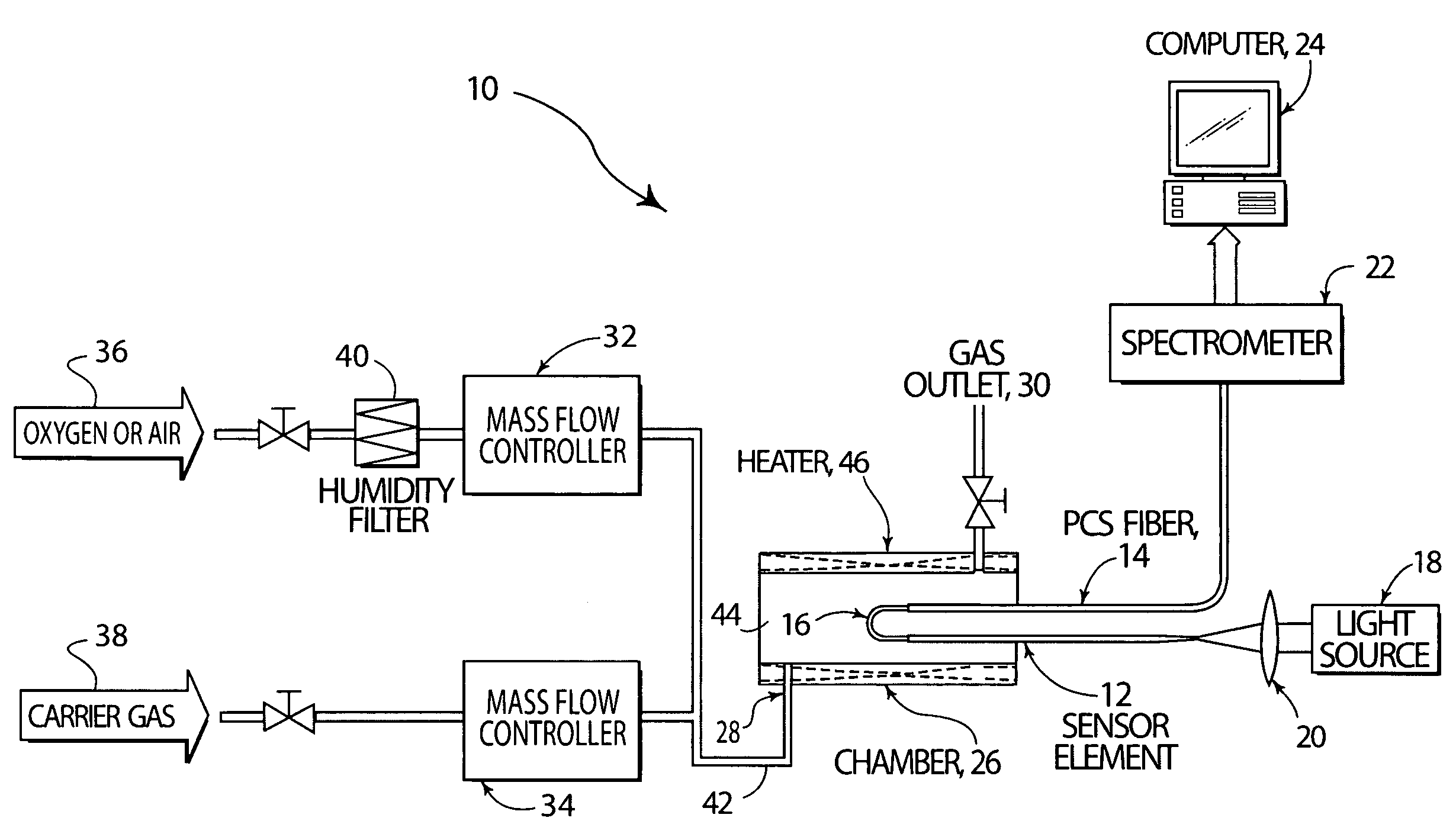Oxygen detection using evanescent fields
- Summary
- Abstract
- Description
- Claims
- Application Information
AI Technical Summary
Benefits of technology
Problems solved by technology
Method used
Image
Examples
example
[0026]A. Preparation of the Optical Fiber Sensor
[0027]Both ends of a 50 cm long plastic clad silica (PCS) multi-mode optical fiber 14 having a core diameter of 600 μm were polished using 2000-grit and 3 μm polishing film. The plastic jacket of the PCS fiber was removed from the central portion of the fiber along a 6 cm length by chemical etching by immersing the fiber into a 50% HF solution for 10 min. Since evanescent radiation represents a small fraction of the light power introduced into the fiber, the present optical fiber oxygen sensor was constructed with a U-shaped bend to enhance absorbance. As stated hereinabove, other configuration may be used. The diameter of the semicircle portion of the U-shape structure was about 1.5 cm. Other diameters may be used, except that care must be taken to avoid breaking the optical fiber as a result of too sharp of a bend.
[0028]B. Sol-Gel Film Fabrication:
[0029]Sol-Gel is an optically transparent glasslike material formed by hydrolysis and p...
PUM
 Login to View More
Login to View More Abstract
Description
Claims
Application Information
 Login to View More
Login to View More - Generate Ideas
- Intellectual Property
- Life Sciences
- Materials
- Tech Scout
- Unparalleled Data Quality
- Higher Quality Content
- 60% Fewer Hallucinations
Browse by: Latest US Patents, China's latest patents, Technical Efficacy Thesaurus, Application Domain, Technology Topic, Popular Technical Reports.
© 2025 PatSnap. All rights reserved.Legal|Privacy policy|Modern Slavery Act Transparency Statement|Sitemap|About US| Contact US: help@patsnap.com



